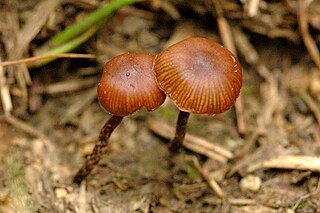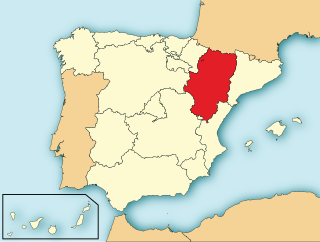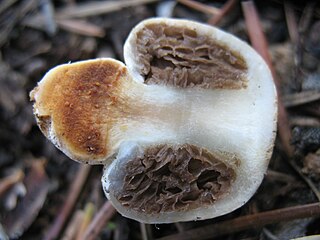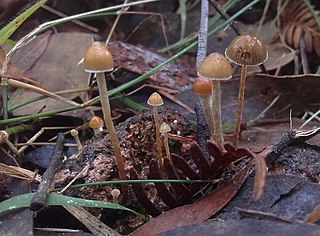
The Strophariaceae are a family of fungi in the order Agaricales. Under an older classification, the family covered 18 genera and 1316 species. The species of Strophariaceae have red-brown to dark brown spore prints, while the spores themselves are smooth and have an apical germ pore. These agarics are also characterized by having a cutis-type pileipellis. Ecologically, all species in this group are saprotrophs, growing on various kinds of decaying organic matter. The family was circumscribed in 1946 by mycologists Rolf Singer and Alexander H. Smith.

Deconica montana, commonly known as the mountain moss Psilocybe, is a common species of mushroom that usually grows in mossy and montane regions around the world. The appearance is that of a typical "little brown mushroom" with a small, brown cap and a straight, thin stipe.
Psilocybe acutipilea is a species of mushroom-forming fungus in the family Hymenogastraceae. It was discovered in October 1881 in Apiahy, Sao Paulo State, Brazil by Carlos Spegazzini, and described by him as a new species of Deconica in 1889. Gastón Guzmán transferred it to Psilocybe in 1978, but Ramirez-Cruz considered it a possible synonym of Psilocybe mexicana, but the type specimen was too moldy for them to be certain.
Psilocybe pintonii is a species of mushroom in the family Hymenogastraceae. It is in the section Zapotecorum of the genus Psilocybe, other members of this section include Psilocybe muliercula, Psilocybe angustipleurocystidiata, Psilocybe aucklandii, Psilocybe collybioides, Psilocybe kumaenorum, Psilocybe zapotecorum, Psilocybe kumaenorum, Psilocybe subcaerulipes, Psilocybe moseri, Psilocybe zapotecoantillarum, Psilocybe zapotecocaribaea, and Psilocybe antioquiensis.

Psilocybe hispanica is a species of fungus in the family Hymenogastraceae. It produces small brown mushrooms with conical to convex caps up to 10 mm (0.4 in) in diameter and stems 16 to 25 mm long by 0.5 to 1 mm thick. Reported as new to science in 2000, it is only known from the Pyrenees mountain range in northern Spain and southwestern France, where it grows on horse dung in grass fields at elevations of 1,700 to 2,300 m. The mushroom contains the psychoactive compound psilocybin. The possible depiction of this species in the 6,000-year-old Selva Pascuala rock art suggests that it might have been used in ancient religious rituals—the oldest evidence of such usage in prehistoric Europe.

Deconica is a genus of mushroom-forming fungi in the family Strophariaceae. It was formerly considered synonymous with Psilocybe until molecular studies showed that genus to be polyphyletic, made of two major clades: one containing bluing, hallucinogenic species, the other non-bluing and non-hallucinogenic species. Deconica contains species formerly classified in the sections Deconica and Coprophila of Psilocybe.

Nivatogastrium is a genus of secotioid fungi in the family Strophariaceae. The genus has contained four species found in North America and New Zealand, but the type species, Nivatogastrium nubigenum, is now considered to be a gasteroid species of Pholiota, and was transferred to that genus in 2014.
Deconica neorhombispora is a species of agaric fungus in the family Strophariaceae. It can be found in Brazil and Mexico. It was originally described from specimens found near San Bartolomé Ayautla, Oaxaca, Mexico as Naematoloma rhombisporum, then transferred to Hypholoma rhombispora. After this, it was transferred to Psilocybe neorhombispora because the name "Psilocybe rhombispora" was already occupied, but this species is now a synonym of Deconica phyllogena. Psilocybe neorhombispora was finally transferred to Deconica neorhombispora. Psilocybe subbrunneocystidiata was originally named as a new species of Psilocybe from Itapuã State Park in Rio Grande do Sul, Brazil. The authors assigned it to Psilocybe section brunneocystidiatae with Psilocybe brunneocystidiata, Psilocybe neocaledonica and Psilocybe aureicystidiata. Psilocybe subbrunneocystidiata was found to be a synonym of Deconica neorhombispora. Psilocybe neocaledonica and Psilocybe aureicystidiata were also found to belong in Deconica.
Deconica aequatoriae is a species of mushroom in the family Strophariaceae found in Ecuador.
Deconica alpestris is a species of mushroom in the family Strophariaceae. Its holotype was found by Rolf Singer in 1979 growing on calcareous soil at an elevation of 1900 meters in the alps in Austria.
Deconica angustispora is a mushroom that was discovered in the late 1930s and formally described by A.H. Smith in 1946 as a species of Psilocybe. It is very small and has rarely been documented.
Deconica semiinconspicua is a mushroom native to the state of Washington in the United States. The mushroom is small, rare, difficult to see and, according to Guzmán and Trappe (2005), stains blue where damaged. However, Ramírez-Cruz et al. (2012) state that it is "without a really observable bluing reaction". It was described as a psychoactive species of Psilocybe in section Semilanceatae, but Ramírez-Cruz et al. (2012) found that its macroscopic and microscopic morphological features and its DNA sequence, which Ramírez-Cruz et al. did not publish, were a better match for Deconica. Ramírez-Cruz et al. (2012) also stated that it is very similar to Deconica montana. It can be mistaken for Psilocybe silvatica and can be distinguished by its more conic cap, narrower spores and narrower cheilocystidia.
Deconica thailandensis is a species of mushroom in the family Strophariaceae. It is found in Thailand.
Deconica pseudobullacea is a species of mushroom in the family Strophariaceae.
Deconica umbrina is a species of mushroom in the family Strophariaceae.
Deconica goniospora is a species of mushroom in the family Strophariaceae. It is found in Sri Lanka.
Deconica aureicystidiata is a species of mushroom in the family Strophariaceae. It has been found in Mount Halimun Salak National Park and Gunung Gede Pangrango National Park in Java, Indonesia.
Deconica neocaledonica is a species of mushroom in the family Strophariaceae. It has been found in New Caledonia and in Mount Halimun Salak National Park in Java, Indonesia. It is very similar to Deconica aureicystidiata.

Psilocybe alutacea is a species of agaric fungus in the family Hymenogastraceae. It was described in 2006 and is known from Australia and New Zealand. It is coprophilous, growing on animal dung. The fruitbodies have a small conical or convex cap, subdistant gills with an adnate attachment, a slender brown stipe and a faint blueing reaction to damage. As a blueing member of the genus Psilocybe it contains the psychoactive compounds psilocin and psilocybin.




